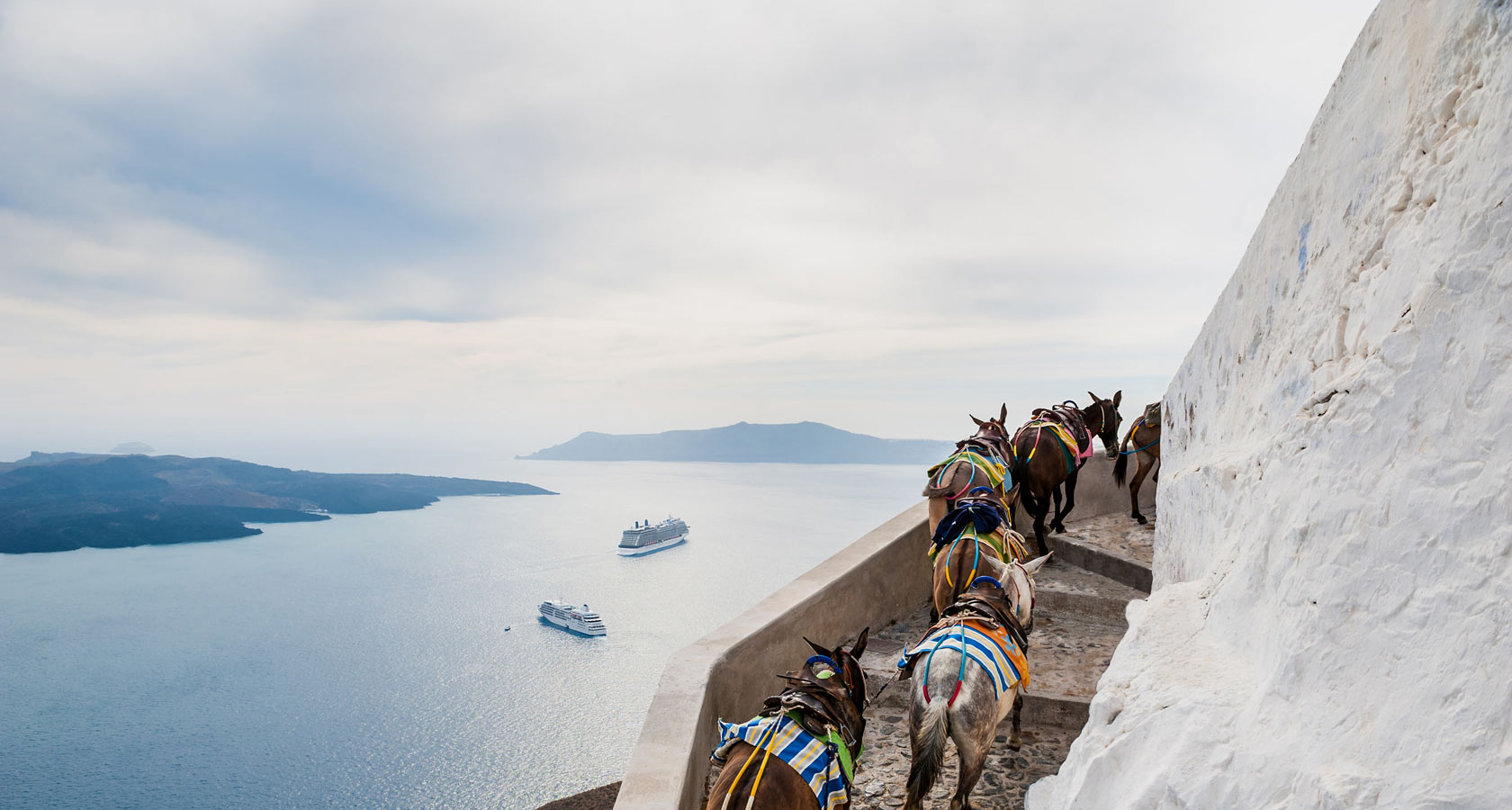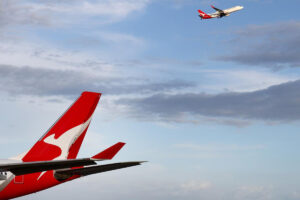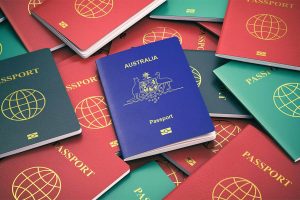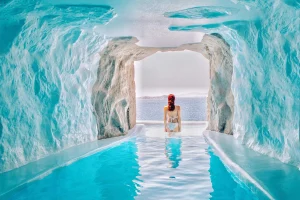Greek island’s famous donkeys found to have spinal injuries, saddle sores and exhaustion
Put yourself in their hooves: that is the message holidaymakers will be asked to consider before deciding to ascend the 600 steps that zigzag up the cliffs of Santorini on the back of a donkey.
After several summers of the fabled isle’s equine population being forced to bear the brunt of overweight tourists, activists, in collaboration with the cruise-line industry, have finally taken action. The result is an unprecedented initiative to sensitise travellers to the stress placed on the animals when compelled to make the vertiginous climb with perilously heavy human cargo.
“The campaign is about to start,” said Nikos Zorzos, the island’s mayor speaking from Fira, Santorini’s clifftop capital. “Representatives from the cruise liner association were here in my office this week promising to raise awareness [of the problem] and from our side we’ll be distributing information leaflets. Our mules and donkeys are part of our tradition. Younger owners, especially, have understood that they need to be looked after.”
The animals have been used since time immemorial to shuttle people from the volcanic isle’s port to its main settlement 400 metres above sea level.
The arrival of a five-cabin cable car helped lessen the load before Santorini’s runaway popularity as Europe’s most favoured island destination created the increasingly modern plague of over-tourism. With as many as 17,000 tourists a day disembarking from cruise ships off the 76 sq km Cycladic isle, demand has soared.
Under the pressure, more equines have been recorded suffering from spinal injuries, saddle sores and exhaustion in recent years than ever before.
Last summer, over 108,000 people signed an online petition deploring what it described as the “mindless and unnecessary torture [of equines] used as cruel transportation for people who want the ‘real Greek’ experience”.
Anger over the plight of donkeys and mules – estimated at as many as 4,000 with most imported from France –grew when reports of abuse and neglect, reinforced by images of overweight cruise ship passengers riding the animals, wended their way through social media.
The outcry prompted the Greek government to enact legislation making it illegal to burden animals with “any load exceeding 100kg (15st), or one-fifth of [their] body weight.” Although holidaymakers weren’t mentioned specifically, the regulation was interpreted as a ban on owners allowing overweight tourists to mount the creatures.
But animal welfare campaigners say the buck should not only stop with muleteers. Visitors, they argue, should also make informed decisions.
“Our In Their Hooves campaign aims to encourage tourists to stop and think before using donkey taxis to climb the steep steps at Fira port,” said Catherine Rice, PR officer at The Donkey Sanctuary, which launched the initiative. “It suggests holidaymakers consider whether donkeys and mules are being treated humanely, have enough shade and water, as well as whether loads they are being asked to carry are suitable. If not, other options, such as walking or taking a cable car, might be a more responsible mode of transport.”
Cruise liners signed up to the campaign after receiving multiple complaints from passengers about the way donkeys were being treated on Santorini. In talks with the island’s mayor on Tuesday, industry figures confirmed they would aim to raise awareness by screening an animated video created by the British animal welfare charity on board ships as they head to Europe.
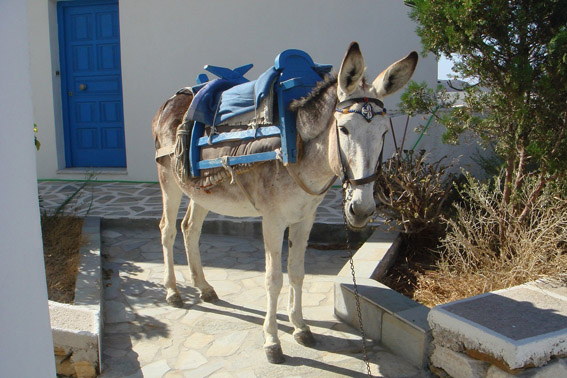
“Asking our guests to put themselves ‘In Their Hooves’ is an important part of our destination sustainability plan for the island,” said Maria Deligianni, who represents the eastern Mediterranean for the Cruise Lines International Association, Clia, the industry’s largest trading group. “The Santorini donkeys are one of the iconic features of the island and we are joining with the Donkey Sanctuary to urge guests to use their services responsibly.” As part of efforts to help ensure Santorini “works for both residents and visitors”, liners have also consented to limit the number of passengers disembarking from the gargantuan cruise ships that daily moor in the crescent-shaped isle’s sea-filled crater.
“The measure will really begin being enforced this year when no more than 8,000 people, spaced out during the course of a day, are permitted to come ashore,” said the mayor adding that over the past year business enterprises, alone, had increased by 10% on the island.
“Over-tourism is a problem. We’re trying to find solutions to runaway development. We’ve taken concrete steps to improve the welfare of donkeys and now with this campaign and the reduction in cruise passengers I am beginning to feel optimistic.”
Source: theguardian.com



